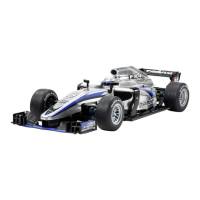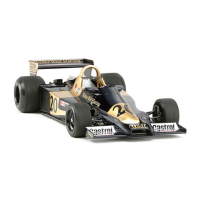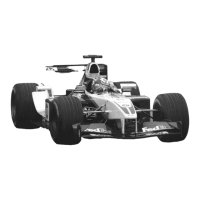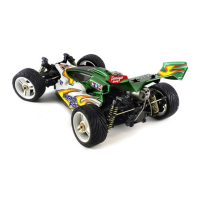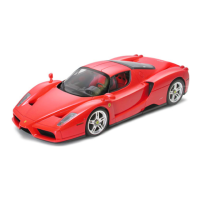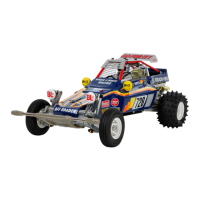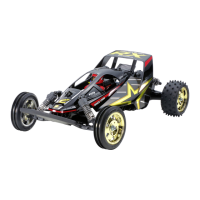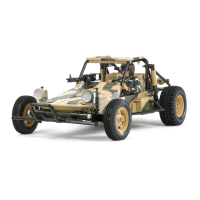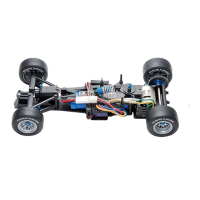
Do you have a question about the Tamiya F104 Ver. II Pro and is the answer not in the manual?
| Scale | 1/10 |
|---|---|
| Type | Formula One |
| Chassis | F104 |
| Version | Ver. II Pro |
| Drive | 2WD |
| Wheelbase | 270mm |
| Length | 440mm |
| Motor | Not included |
| Body Material | Polycarbonate |
| Chassis Material | FRP (Fiberglass Reinforced Plastic) |
| Tire Type | Rubber |
| Required Equipment | 2-channel radio, servo, ESC, battery, charger |
| Motor Type | 540-type brushed motor |
Recommended R/C system components for optimal performance and control.
Required battery pack and charger specifications for the model.
Essential tools required for the successful assembly of the model.
Identification and function of radio control components.
Steps to charge the battery pack before use.
Instructions for building the lower chassis deck.
Steps for assembling the lower chassis brace.
Mounting the lower brace to the chassis.
Building the motor mount structure.
Recommended tools for model building.
Mounting the rear drive shaft.
Constructing the ball differential unit.
Attaching the differential cap.
Securing the motor to the chassis.
Information about the steering servo.
Procedure to check R/C system functionality.
Building the steering linkage rods.
Attaching the steering tie-rods.
Mounting the front lower suspension arms.
Installing the steering servo.
Attaching the front upper suspension arms.
Building the front wheel uprights.
Mounting the front upright assemblies.
Building the plate for body mounting.
Assembling the damper caps.
Building the roll (side) dampers.
Procedure for filling dampers with silicone oil.
Installing springs on pitch dampers.
Mounting the roll dampers.
Attaching the damper mounting parts.
Building the rear upper deck.
Mounting the pitch dampers.
Example of mounting R/C electronics.
Placing the battery pack in the chassis.
Mounting the battery holder.
Critical safety advice regarding the battery.
Mounting the front wheels.
Mounting the rear wheels.
Attaching the rear wing.
Mounting the front wing assembly.
Placing and securing the car body.
Adjusting wheel alignment for optimal handling.
Fine-tuning the camber angle.
Modifying vehicle height for different surfaces.
Choosing appropriate gear ratios for performance.
Adjusting pitch and roll dampers for optimal response.
Step-by-step guide to operating the R/C car safely.
Key safety warnings for users.
Methods for improving driving skills.
Diagnosing and fixing common problems with the car.
